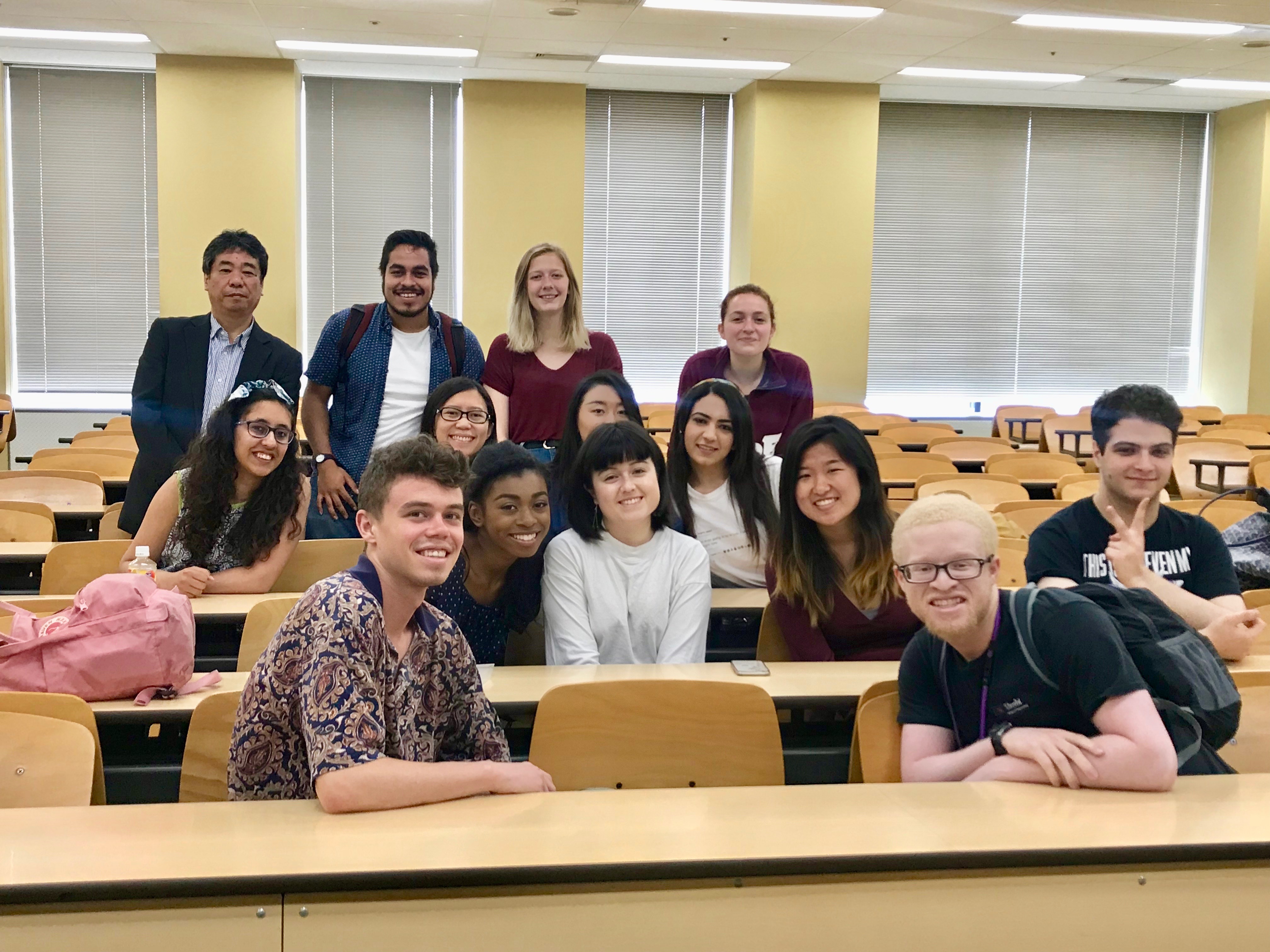By: Ananya Anand
Today’s day started like the previous one. We woke up in our cozy rooms at Sakura Hotel and got breakfast before heading to the second lecture of our trip given by the very knowledgeable Professor Kato of Meiji University. We had previously learned about the depopulation issue in Japan but Kato Sensei went into depth about the different factors contributing to the fast decreasing replacement rate as well as delved into the adverse effects of a changing labor force participation rate. I found it extremely interesting to see the falling male work participation rate. From 2014, the 65.9 million labor force will decrease to about 58 million in 2030. He explained that this declining labor force will severely harm the economy, one that is already vulnerable to market pressures as we learned in Professor Takeda’s economy the day before.

Group photo after Kato Sensei’s lecture
It was interesting to learn about the government’s efforts towards attempting to increase female participation in the labor force. Since Japan has an aging population, the incorporation of elder people (65 years and above) into the labor force will also help strengthen economic growth, which may help offset increasing social expenditure due to aging. The M-shaped curve of female labor force participation, that professor Katada had mentioned during our classes back at USC, is symbolic of the lack of balance between work and child-rearing that women in Japan find difficult to establish. The absence of social institutions to support women and more importantly, the minimal mature consciousness of society towards this difficulty are some key themes that we have learned about and that Professor Kato reiterated on during his informative lecture. Some other topics he covered were the characteristics of the Japanese traditional employment system, non-regular workers engaged in the economy whose proportion increased significantly after the asset price bubble burst as well as foreign population and immigration issues.
After the lecture, Yuni and I met with our Meiji supporters – Tokio and Honoka – to discuss our forthcoming presentation at Yamanaka Lake. While they didn’t know much about the anime part of our research, they showed a keen interest in helping us investigate the treatment of the LGBT community in contemporary Japan. We gave them a list of interview questions we had prepared and they offered to circulate them to provide us with data to support our research. After wrapping up the meeting, Yuni and I took the Chuo line to Tokyo Station and headed to the famous Tokyo Ramen Street. The Tokyo Station itself is a work of art and the surrounding areas of Marunouchi were really fun to explore. It almost reminded me of midtown Manhattan, with its modern architecture and prevalent fashion and professionalism in every corner. We sat at a café and worked on our presentation for 3 hours followed by which we met Julie, Ipsa, Taylor, and Hannah for the famous delicacy – Omurice at Taimeiken. After that, we walked to Ginza and went to the Muji flagship store. Though I’m vegetarian and it has been hard on some days to find substantial meals, the food that I have encountered here in Tokyo has absolutely blown me away. Not to mention, my matcha obsession is being sufficed with every dessert shop Yuni and I manage to visit in between conducting field research at various different anime stores around Akihabara, Harajuku, and Ikebukuro.

Ramen lunch!
It’s an unsettling realization that we have already completed half of this program, but I’m sure I speak for all of us when I say that this is going to be one of the most memorable cultural exchanges any of us have taken part in.
